What Are Hotkeys & How You Can Create One to Boost Your Efficiency
In today’s fast-paced world, efficiency is paramount, and this is true for computer use as well. Just as life has its shortcuts, so do computers, but we’re not talking about the icons on your desktop. Instead, we’re delving into the world of hotkeys—keyboard shortcuts that streamline tasks, helping you accomplish functions quickly and effectively.

Chances are, you’ve already encountered hotkeys, perhaps without even realizing it. A prime example is the ubiquitous Ctrl+C command, which copies highlighted text or objects. Unlike shortcuts in life, which can sometimes lead to unexpected consequences, hotkeys are reliable tools designed to optimize your productivity.
In this comprehensive guide, we’ll demystify hotkeys, exploring their benefits and practical applications. Moreover, we’ll show you how to create your own custom hotkeys, enabling you to work more efficiently than ever before. Get ready to revolutionize your computing experience and join the ranks of power users worldwide.
What are Hotkeys?
Basically, a hotkey is a combination of keys that perform a specific function when pressed together. he aforementioned Ctrl+C hotkey is usually followed by the Ctrl+V hotkey, which performs a paste function. Some hotkeys are universal, others may be OS-specific.
Universal hotkeys are able to function on almost any OS. The copy and paste hotkeys can be utilized on most operating systems. Similarly, there are several hotkeys that you can use on Windows, Linux, and macOS. However, depending on the type of keyboard you have, the hotkeys may vary.
The Alt key in most keyboards is substituted for the Command key on Mac devices. In the same way, some modern laptops and keyboards come with a Fn key. The Fn (function) key was designed for operating hotkeys.

A few keyboards ship with a bunch of extra keys that you can customize as hotkeys. This comes in pretty handy, as you can create your own hotkeys.

How To Create Your Own Hotkeys
You can create custom hotkeys on most OSs. Naturally the process may vary depending on the OS. Follow these guides to create your own hotkeys on different OSs.
On Windows
The easiest way to create new hotkeys is to make use of PowerToys. PowerToys is an app designed by Microsoft to enhance the productivity of Windows. You can download the PowerToys setup through GitHub. Once installed, follow the steps below to create a custom hotkey.
- Open PowerToys.
- Navigate to Keyboard Manager.

Navigate to Keyboard Manager - Ensure that the Keyboard Manager is enabled. Enable it if isn’t.

Enable Keyboard Manager by clicking on the switch - Select Remap a shortcut in the same menu.

Select Remap a shortcut - A window will open. It will have instructions on how to create a hotkey. For example, here is a custom hotkey designed to play the next track on Spotify.

A custom hotkey designed to play the next track on Spotify - Click OK to save your changes when you’re done. Try out your hotkeys once you are done making them. You can make hotkeys for a variety of functions such as playing/pausing media, altering the brightness etc.

Click on OK when done creating the hotkey
Creating hotkeys for individual apps on Windows
Similarly, you can create hotkeys for launching individual apps on Windows without the help of PowerToys. Follow these steps to do so:
- On your desktop, right-click on any app icon. Select Properties from the menu.

Select Properties from the right-click menu - Click on the Shortcut key bar.
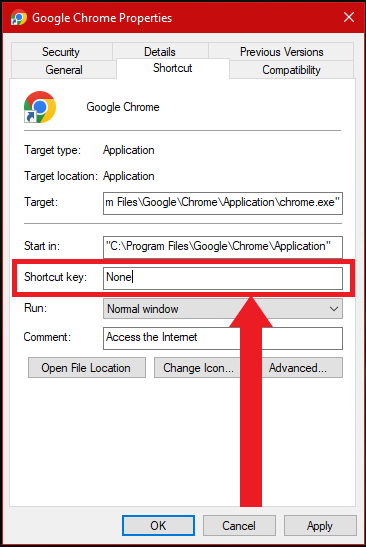
Click on the Shortcut key bar - Press any key on your keyboard (except Ctrl and Alt). Windows will automatically create a hotkey with the combination of Ctrl+Alt+the key you pressed earlier.
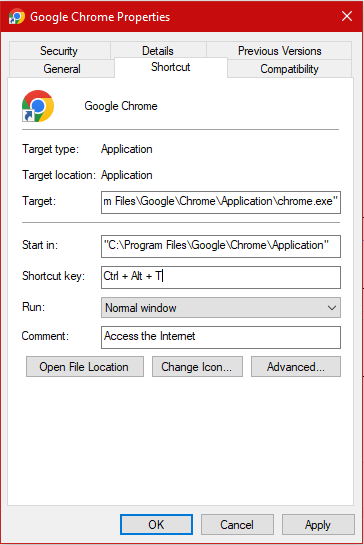
A hotkey will be created with the combination Ctrl+Alt+ the key you press - Click on Apply and close the window. Test your new hotkey.
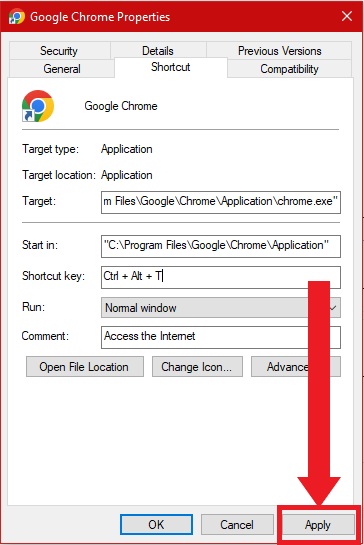
Click on Apply
On macOS
macOS users have it easier than Windows in this case; there is a native setting for hotkeys. However, these hotkeys are only able to perform in-app functions. To access this setting, follow the steps below:
- Search for “Keyboard” in Spotlight. Press the dedicated Spotlight button if present, or just use the Command+Spacebar shortcut to bring it up. (how ironic)
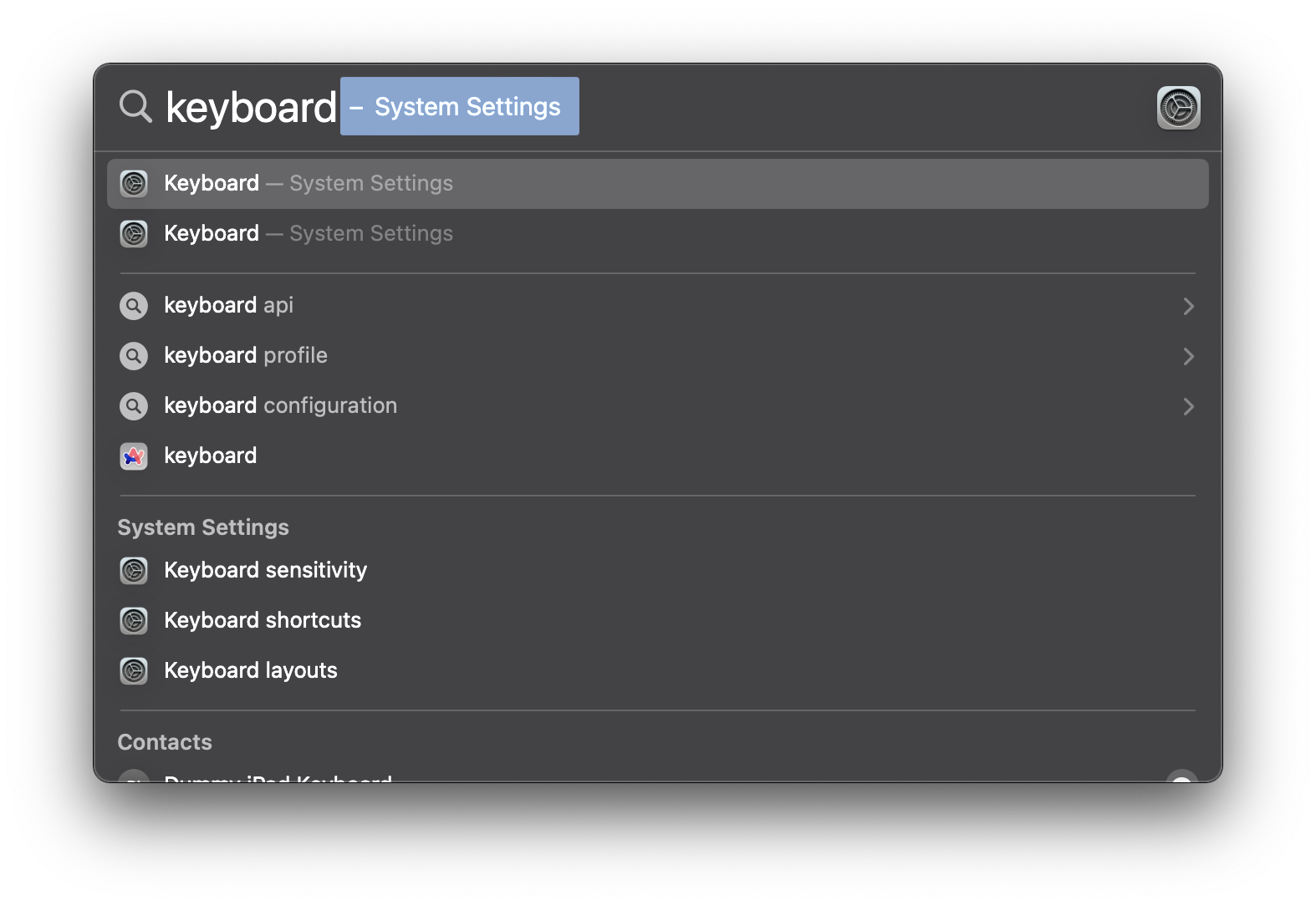
Keyboard setting in Spotlight - Now, click on the Keyboard Shortcut button located towards the right. The location may be different depending on your version of macOS.

Keyboard shortcuts option in Settings - Straightaway, a menu will appear with hotkeys for different categories. You can view existing hotkeys, toggle them on or off, or configure new ones here. For this particular example, select App Shortcuts.
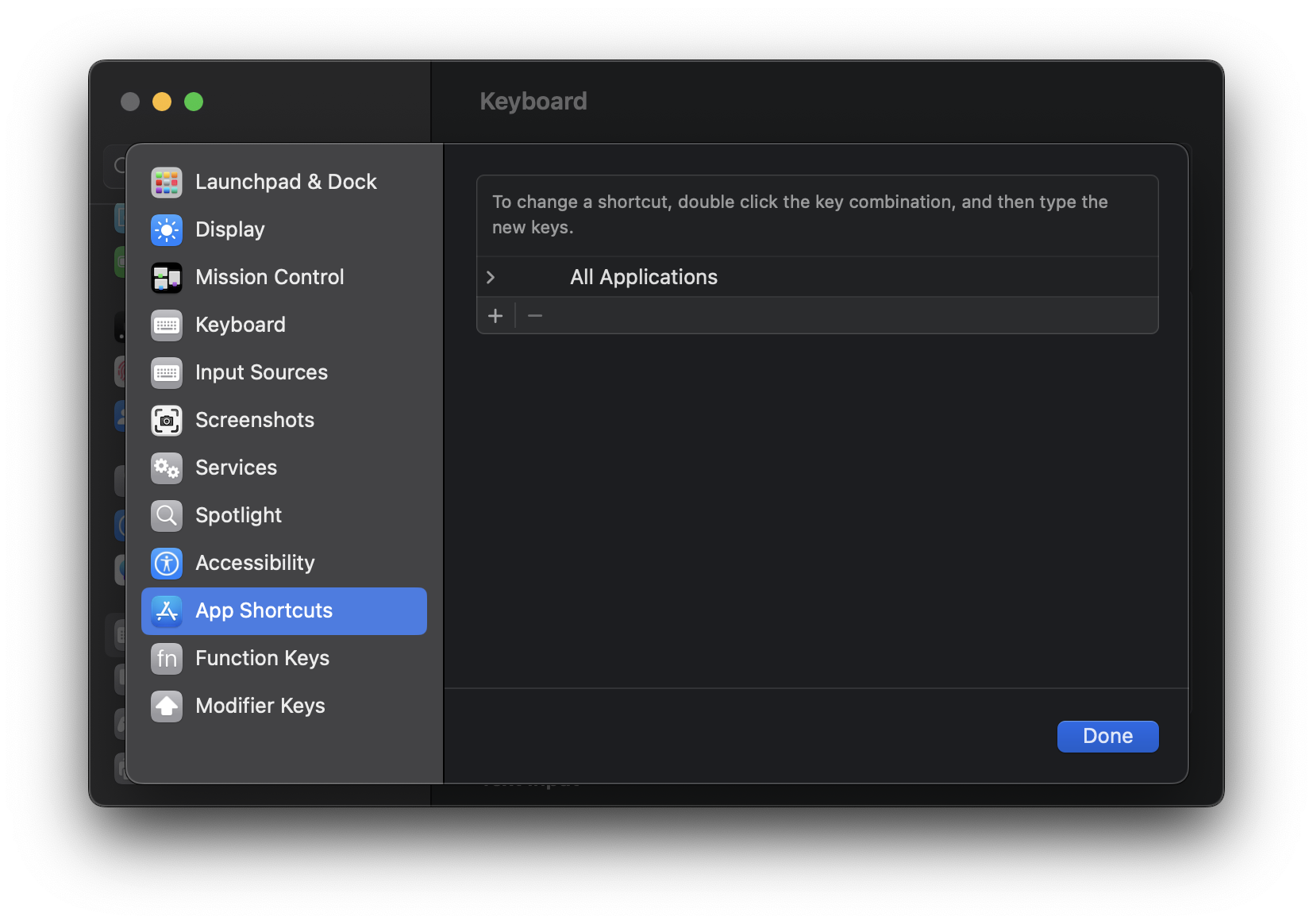
App Shortcuts option in Keyboard Shortcuts - Now, open up any app and look around in the Menu Bar to find a function that doesn’t have any shortcut present. Functions like these won’t have hotkey shortcuts present next to them. We’ll use the Share option inside Safari.
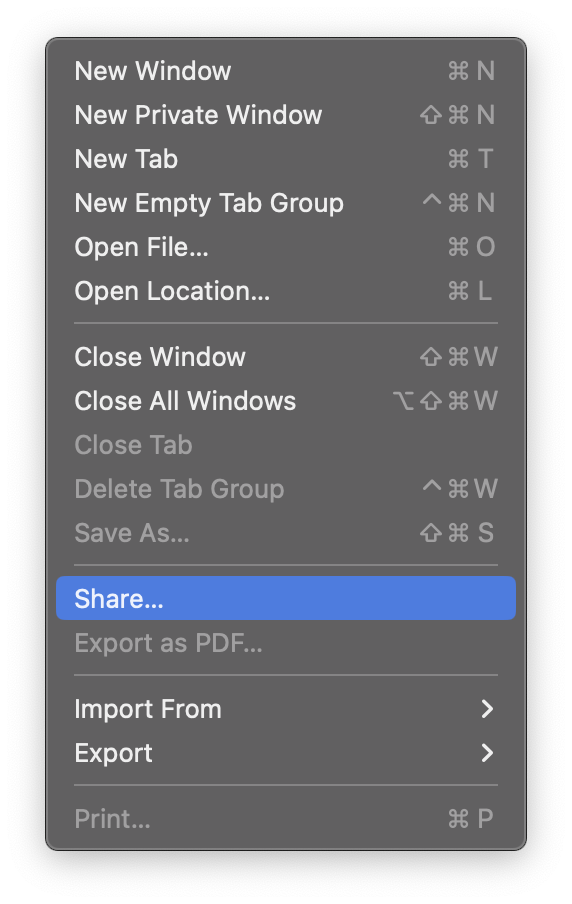
The Share option in Safari does not have a shortcut - Note the exact name of the function. Now open up App Shortcuts again. Click on the “+” button.
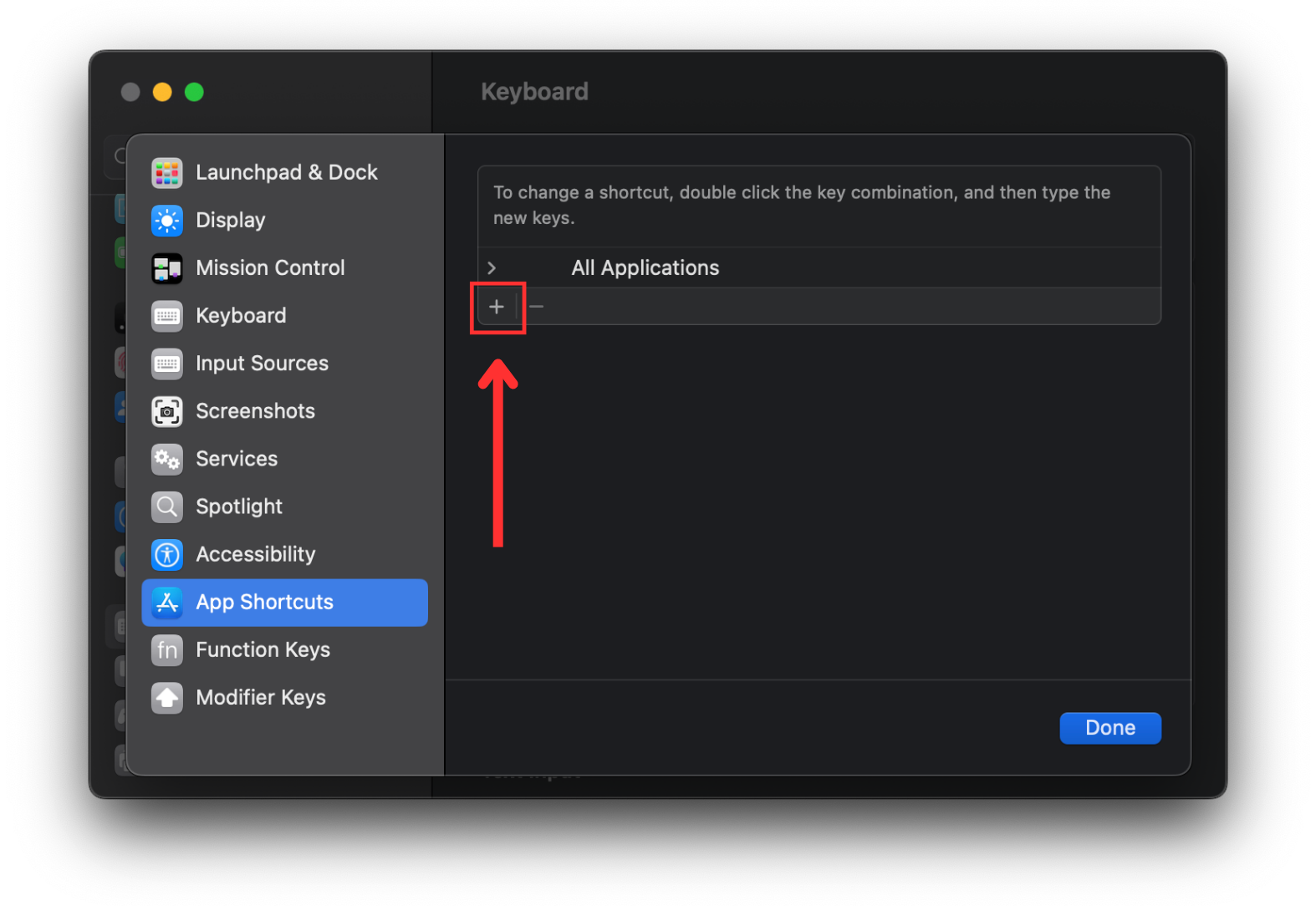
Press the + button to add shortcuts - On the panel that appears, choose your app through the Application drop-down. Again, we chose Safari here.
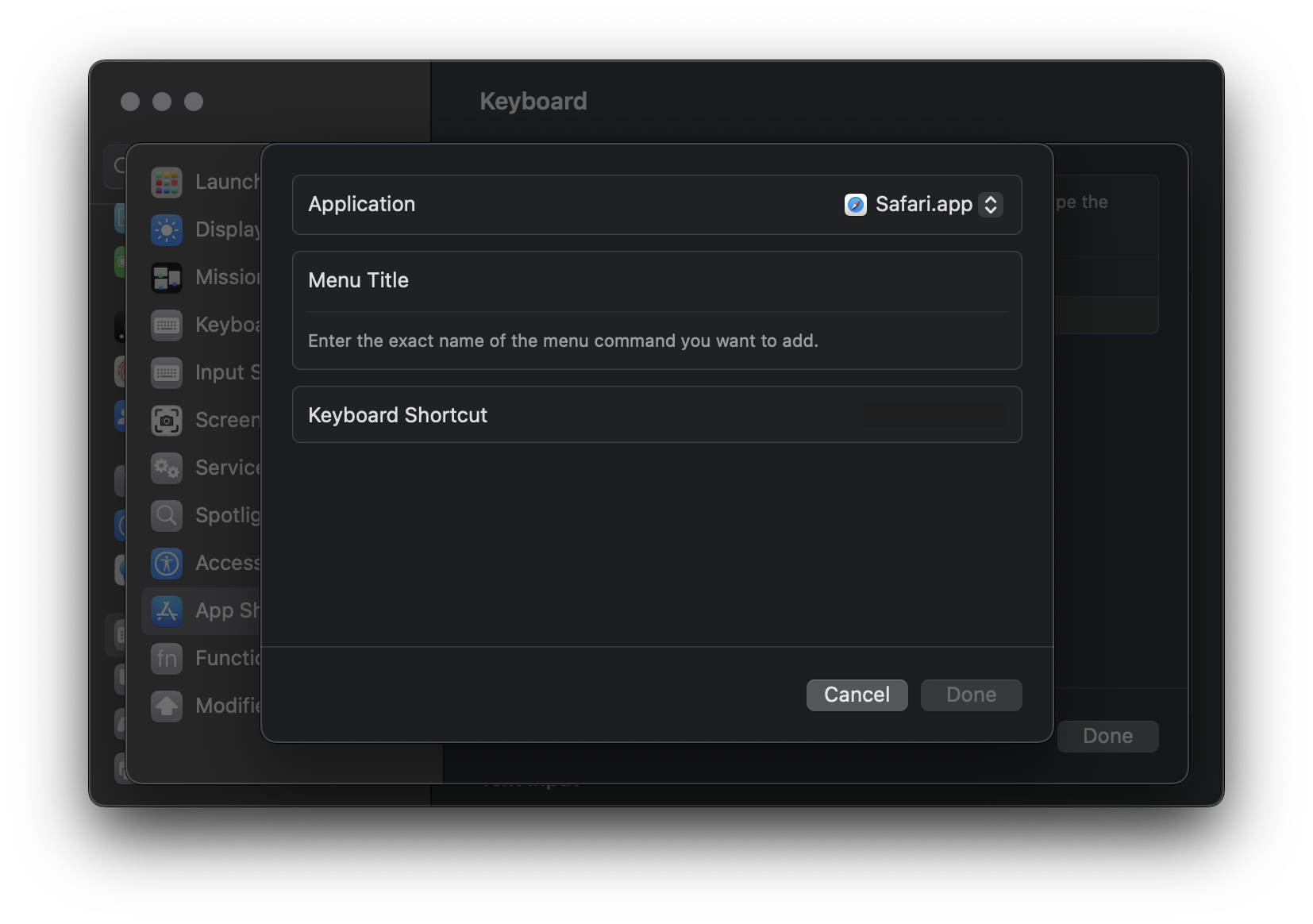
Safari selected for shortcuts editing - Next, click on the Menu Title. You need to type in the exact name of function you noted earlier. As the Share option has 3 full stops next to it in the file menu, it will be typed in the same manner; as “Share…”, without the quotation marks.
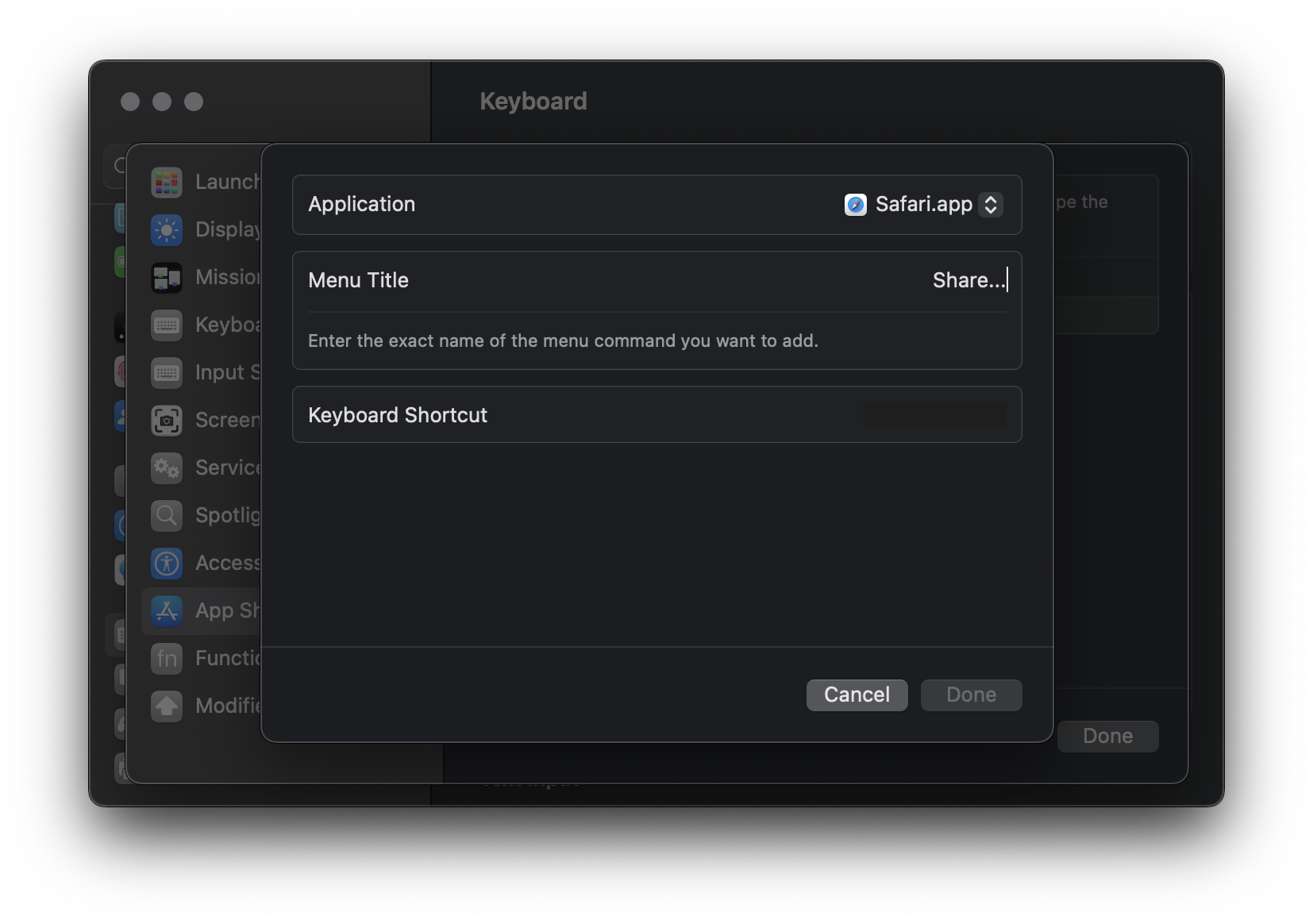
Choosing the name of the shortcut - Finally, in the Keyboard Shortcut section, design a hotkey. The hotkey cannot simply be a sole letter key; you must make use of either Command, Control (Ctrl), or Option keys in combination with another key. Click on Done when you’re finished.

The “Share…” App Shortcut is now ready with a hotkey selected - Once again, open the File menu, or the menu you chose. The hotkey should be denoted next to the function. Feel free to try it out.

The Share option now has a shortcut next to it
If you’re on macOS Ventura or above, you can simply search for “keyboard shortcuts” using Spotlight and the setting will show up right there for you:
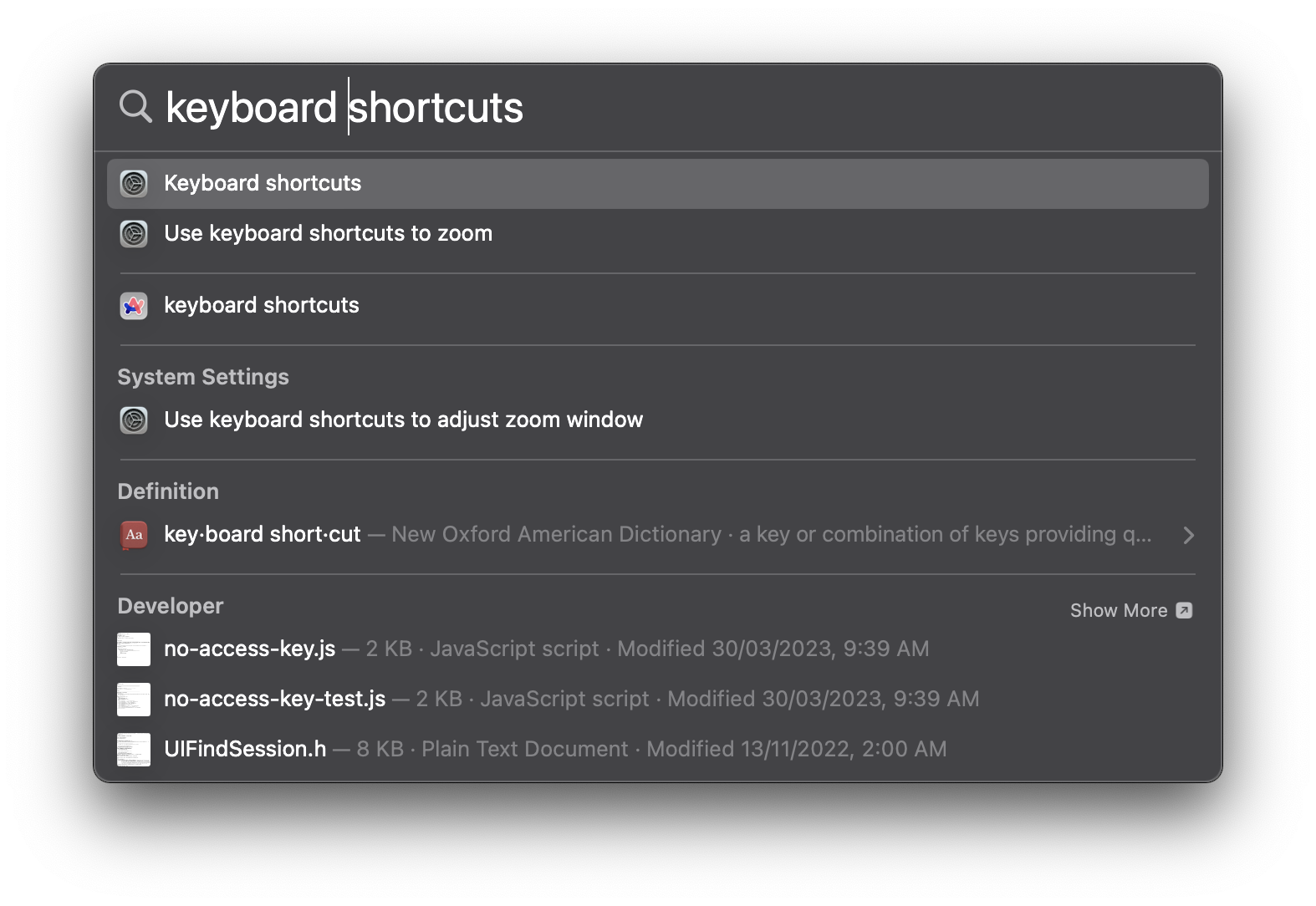
Creating all-purpose hotkeys on macOS
To create all-purpose hotkeys on macOS, you’ll need to make use of some apps. Apple’s own Shortcuts and Automator app can help you out here. Similarly, third-party alternatives to the Shortcuts app include Keyboard Maestro, Alfred, etc.
On Linux
The ability to create hotkeys varies on the version of Linux you are running. However, Linux being Linux, the hotkeys are more versatile and are able to carry out complex tasks. You can even run whole terminal commands using hotkeys.
At any rate, to create and view your hotkeys on Ubuntu, the most popular Linux distro, start off by opening your system settings. You can just directly search for “keyboard” and click the first option in the Settings section.
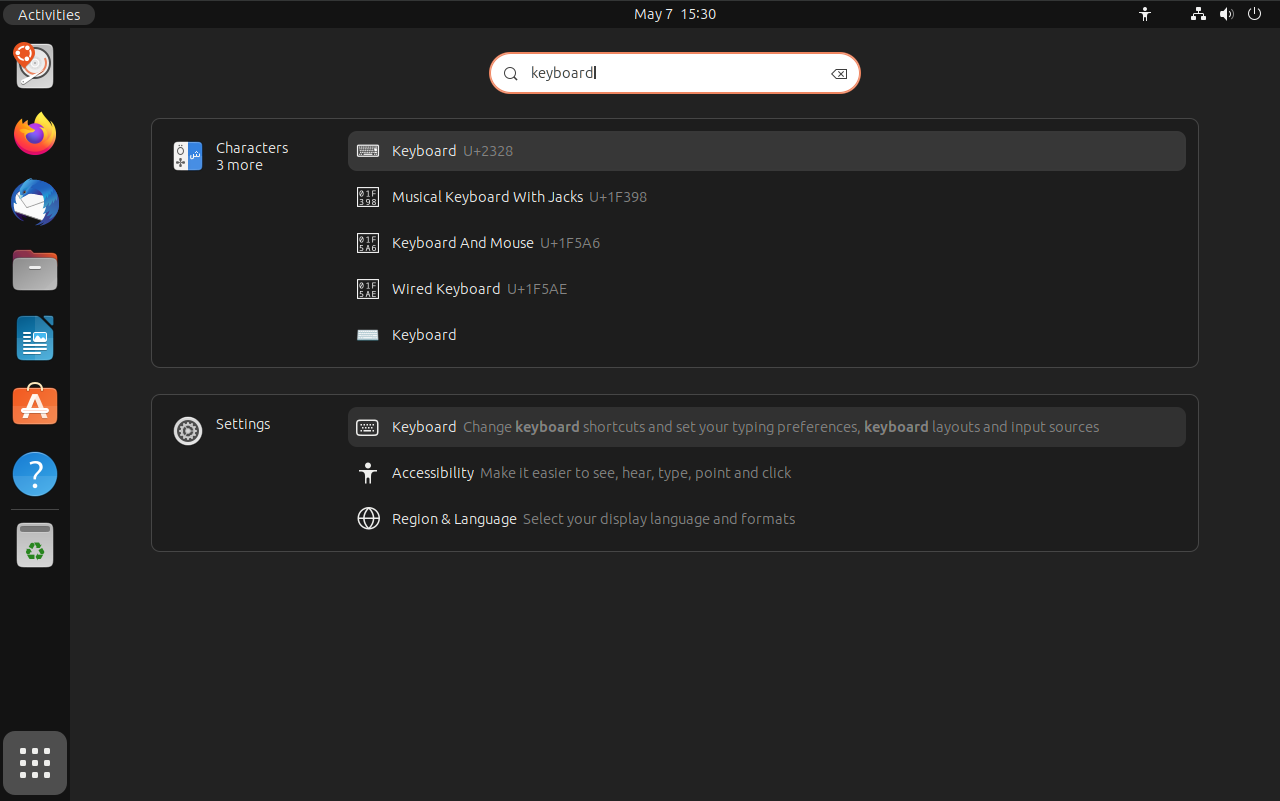
- Once in the keyboard settings, scroll down and click the “View and customize shortcuts” option.

- Here, you will find an extensive list of premade shortcuts or hotkeys, just like on macOS. Similarly, you can add your own by scrolling down and selecting the “Custom shortcuts” option.
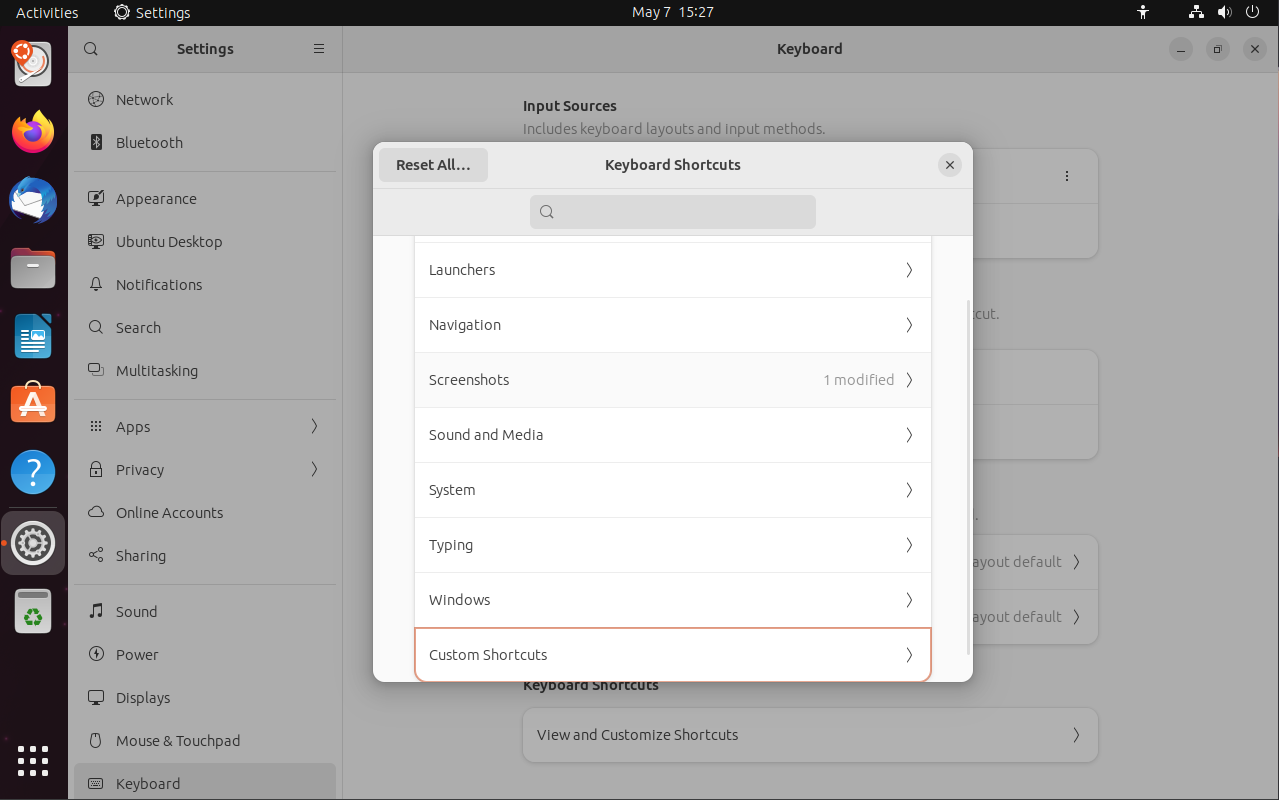
- Give a name and command to your custom shortcut, and then register the exact hotkey combination to trigger the shortcut.

- Once everything is in order, simply save the shortcut and voila, you’re done! We created the following screenshot hotkey as an example:
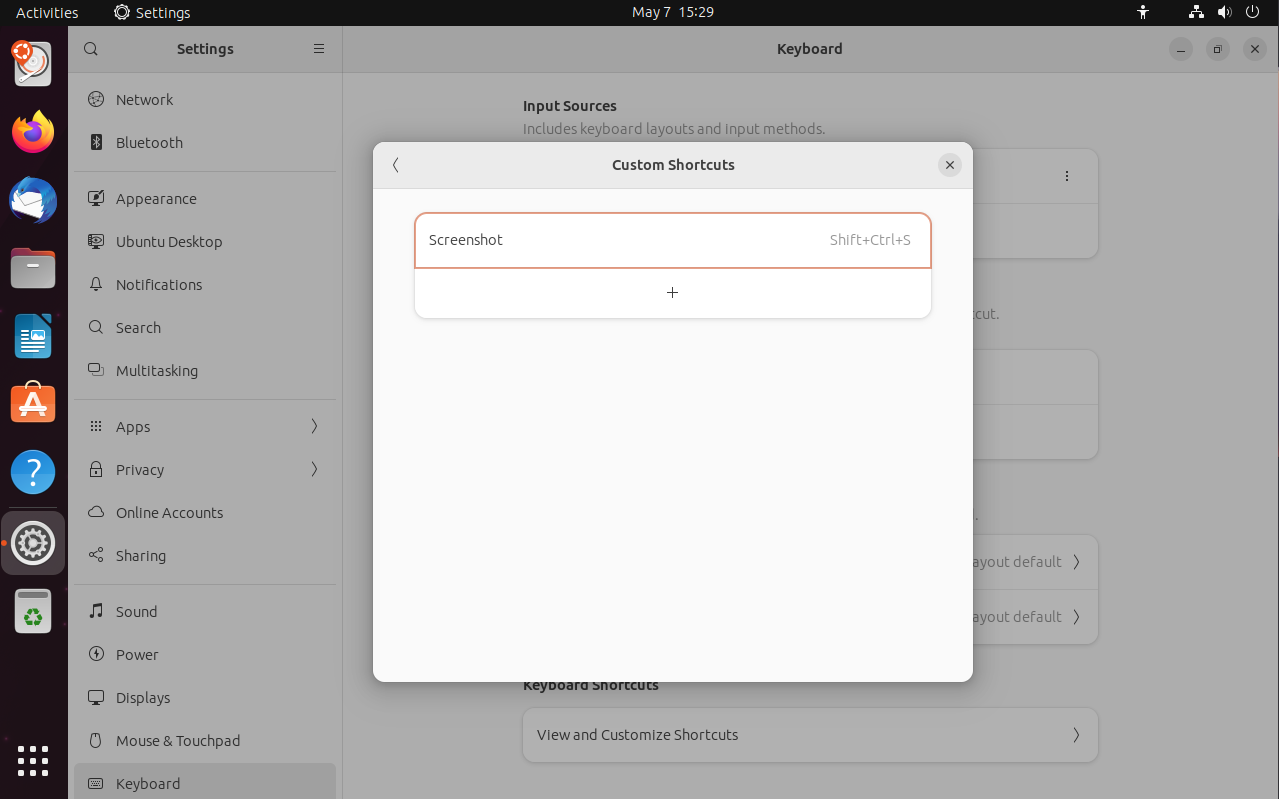
Wrapping Up
Hotkeys, undoubtedly, have the potential to increase productivity and efficiency on a large scale. Carrying out the most mundane tasks has become simpler and faster, thanks to hotkeys. With the help of third-party apps, we can exploit hotkeys to perform complex tasks too.
However, one should be cautious when setting up custom hotkeys. If they coincide with an existing one native to the app, it can end up creating a mess.
 Reviewed by
Reviewed by 




